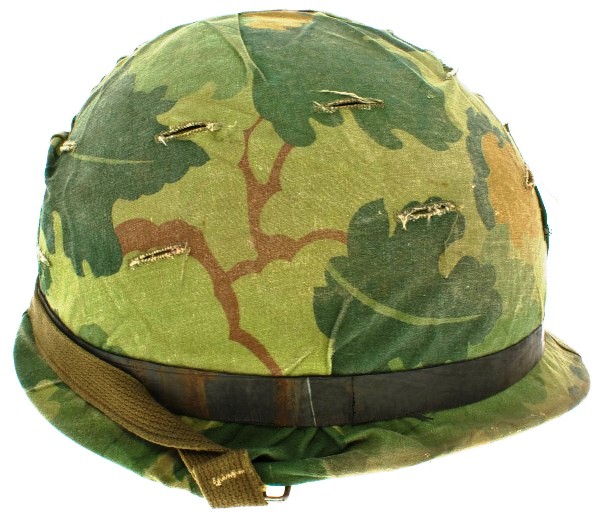
We all know that some iconic pieces of militaria, such as World War II German helmets that used to be affordable are now out of reach for many as demand drives prices up. So are there any iconic pieces out there that are affordable?
WARSTUFF Buy and Sell Vietnam War Era M-1 HelmetsEnter the Vietnam War era U.S. General Infantry M-1 helmet, an icon of the conflict thanks to the widespread media coverage and subsequently the film producers. 36 + years on from the war, Vietnam militaria is beginning to gather interest as the people continue to try and understand, rationalise, come to terms with, or simply remember the contributions and sacrifices so many made during that period. The result is that prices are beginning to rise, but crucially for the collector on a budget, the prices of that most iconic collectable, the U.S. issue M-1 helmet are still quite low.
As with all our tips articles, our advice to you is to do your research, get hold of a good set of example pictures, check the seller’s feedback and go into an online sale informed of what to look out for, the questions to ask and above all with some common sense. It is buyer beware out there.
With this in mind, here are our top five tips to help you buy a Vietnam War era M-1 helmet online today:
1) Check the cover carefully
M-1 Helmet covers need to be analysed carefully for authenticity. Not all Vietnam War helmets had the Mitchell Cover many assume all Vietnam lids should have, and many online sellers offer 1977 and ’83 dated ERDL (Engineer Research and Development Lab) and Woodland covers as the real deal. Look for covers that are un-dated, or dated 1973 or earlier. The most collectable covers are dated 1964-69 when America’s involvement was at peak, so expect helmets with these covers to carry a premium.
2) M-1 Steel shells are typically authentic
Steel pots are in the main, the real deal. Last M-1 helmets rolled off the line in 1976 (the war ended in 1975) and are almost identical to production items from as early as 1966. As many World War Two helmets were repainted and repurposed, it’s not uncommon to find a front-seam M-1 with Vietnam War connection. Not much to worry about here.
3) Authentic bands have characteristics
Camouflage helmet bands were deployed on around 80% of all G.I. M-1 helmets. Look for bands with no markings for early period helmets, or “US.Band.Helmet.Camouflage.” printed on for later period. Bands made from Jeep inner tubes were also used when supply chains to remote regions of the conflict dried up. Bands should not have reflective ‘cats eyes’ which appeared on post-conflict bands.
4) Chin straps also have identifying marks
The most common chin straps are marked with an anchor and typically big enough to be looped around the helmet for ease of storage. Airborne chinstraps were attached directly to the liner, infantry chin straps to the steel pot – this is the M-1C helmet, and very collectable. If the chin strap has a split chin-cup and angled clips, this is a post-war helmet, so avoid it.
5) Liners should have appropriate dates
M-1 liners also require careful checking. There will be a date printed on the right or left parallel strap and, if the sweatband is included, there will also be a date near the adjustment buckle. Helmets with pre 1973-74 dated liners are the most sought after with the late 1960s earning a premium.
So now you know our top five tips for buying a Vietnam War era M-1 helmet, where do you go next? Visit our Buy page of course and get searching.

